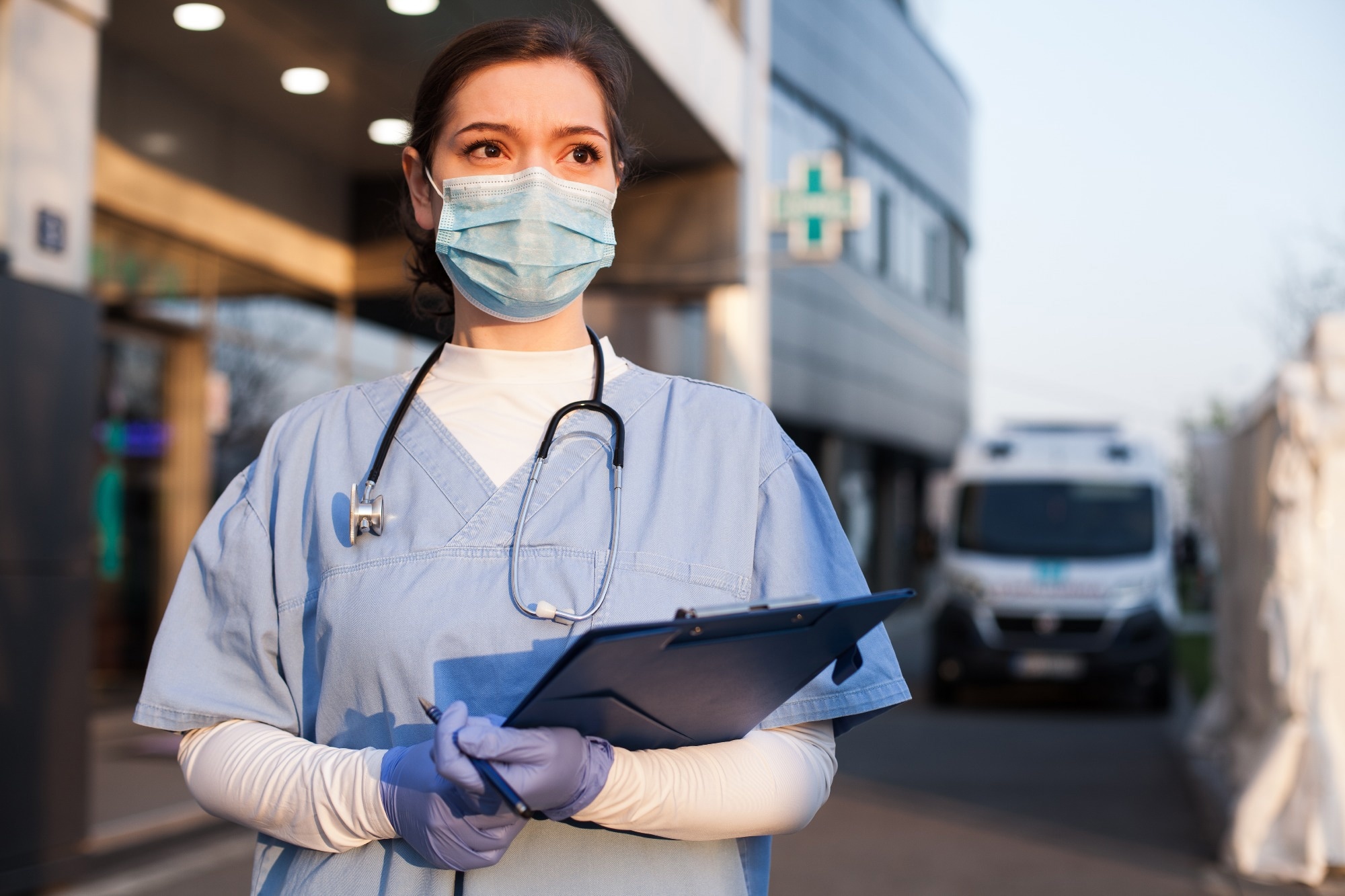In a recent study published in Clinical Infectious Diseases, researchers used large-scale viral genomic and social network analyses to determine whether infection prevention (IP) measures used during the severe acute respiratory syndrome coronavirus 2 (SARS-CoV-2) pandemic were adequate in protecting healthcare workers (HCWs) and patients from acquiring SARS-CoV-2.
 Study: Integrated Genomic and Social Network Analyses of Severe Acute Respiratory Syndrome Coronavirus 2 Transmission in the Healthcare Setting. Image Credit: Cryptographer/Shutterstock.com
Study: Integrated Genomic and Social Network Analyses of Severe Acute Respiratory Syndrome Coronavirus 2 Transmission in the Healthcare Setting. Image Credit: Cryptographer/Shutterstock.com
Infection prevention protocols in healthcare have been used to prevent infectious diseases for decades, but limited clinical information supports their effectiveness. During the coronavirus disease 2019 (COVID-19) pandemic, SARS-CoV-2 transmission was widespread and personal protective equipment (PPE) availability was limited.
Researchers performed genetic analysis to eliminate spurious associations between cases and transmission. Despite these steps, COVID-19 incidence has decreased among HCWs. The lack of specialized research to assess the efficiency of infection control methods, such as PPE and optimal air exchange and filtration, has led to disparate approaches and ongoing uncertainties regarding their efficacy.
About the study
In the present cross-sectional, retrospective study, researchers investigated whether the electronic contact record (ECR) algorithm and IP protocols during three COVID-19 waves (including the period of Omicron BA.1 and B.1.1.526 variants’ emergence towards the end of 2021) identified and effectively mitigated SARS-CoV-2 transmission in healthcare settings.
The study, conducted from November 2020 to January 2022, involved individuals testing SARS-CoV-2-positive using polymerase chain reaction (PCR) at the University of California San Diego Health (UCSDH).
The team analyzed viral genomics from the samples and performed a social network assessment using electronic health records (EHRs) to derive temporospatial overlap of infections among related viromes and establish contacts among SARS-CoV-2-infected healthcare workers and patients.
The study outcome measure was any instance of SARS-CoV-2 transmission in HCWs, defined as cases within the healthcare setting, during the infection window, with closely related viral genomes and epidemiological connections. The team subjected SARS-CoV-2-positive specimens to whole-genome sequencing (WGS) to identify potential health system transmissions of SARS-CoV-2.
Researchers conducted weekly testing on symptomatic and unvaccinated healthcare workers, with vaccinated individuals being tested weekly during high community prevalence periods. They compared social network analysis findings to those of maximum likelihood phylogenetic and genomic evaluations of the viral sequences to assess epidemiological associations.
The HCWs filled out COVID-19 symptom surveys daily, and positive symptoms or known exposures prompted referrals for testing. To validate the ECR algorithm, the team examined its effectiveness in successfully ruling out unrelated cases through case tracing.
Results
The team obtained high-grade whole-genomic sequences of SARS-CoV-2 from 12,933 individuals and detected 2,397 interaction pairs in the electronic contact record. The Omicron-infected population was older and had a higher likelihood of being vaccinated at the time of the SARS-CoV-2-positive tests, with a higher percentage of healthcare workers than individuals contracting SARS-CoV-2 in the prior two waves.
The ECR algorithm determined 291 contact pairs among 7,821 sequences, with 34 pairs having genomically associated viral sequences. The remnant 257 pairs were inconsistent with SARS-CoV-2 transmission, suggesting they were more genomically associated with SARS-CoV-2.
The 34 genetically related contacts comprised 13 clusters: three indicated healthcare transmission. To find gaps, the scientists broadened the cluster groupings to incorporate individuals with genetically similar viral genomes.
During December 2021 and January 2022, 1,376 HCWs contracted SARS-CoV-2, an increase of more than 800% from the previous two months. Most transmission events in healthcare pairs were observed at the hospital’s Hillcrest campus: 11 pairs (79%) in the second-third COVID-19 waves and 18 pairs (75%) during the Omicron wave, contrary to three pairs and five pairs identified at the newer La Jolla campus, respectively.
In total, 39 individuals and 13 individuals (patients and HCWs) were involved in the likely transmission of SARS-CoV-2 at the Hillcrest and La Jolla campuses, respectively. SARS-CoV-2 transmission rates per 1,000 admissions were 2.5 and 0.6 at the Hillcrest and La Jolla campuses, respectively.
In addition, most individuals who transmitted or acquired the COVID-19-causing virus in the nosocomial settings were placed in shared rooms during their stay (six out of six individuals in the second-third COVID-19 waves, four of six patients during the Omicron wave).
The team identified no transmission events from exposures through COVID-19 patient rooms left open or patients placed in non-negative pressure-type rooms, except SARS-CoV-2 exposure to those sharing rooms and their healthcare providers. The team also identified no SARS-CoV-2 transmission to healthcare workers from individuals admitted to intensive care units due to COVID-19.
Conclusions
Overall, the study findings showed that IP strategies effectively prevent SARS-CoV-2 transmission in healthcare settings, with most events occurring between HCWs or in shared patient rooms in older hospitals.
There were no healthcare-associated transmissions among individuals identified with the infection. The findings support multipronged, scalable infection control protocols to control SARS-CoV-2 transmission.